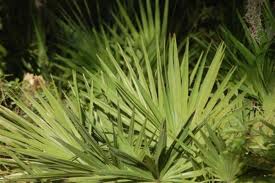Sin mucho ruido nos llega la noticia de que esta hierba, puede ser una nueva vía de estudio, o una alternativa a lo ya existente para tratar la alopecia androgenética.
Hay varios estudios que lo confirman el primero parece hecho en ratones, donde comparándolo con el minoxidil hizo crecer pelo más rápido que éste.
En el tercero se utiliza un grupo control al que se aplica minoxidil y a otro un preparado herbal entre el que esta la Eclipta Alba además de Citrullus colocynthis y Cuscuta Reflexa, y las hierbas obtienen un resultado positivo en cabellos en fase anágena.
Hair growth promoting activity of Eclipta alba in male albino rats.
Department of Pharmaceutical Sciences, Dr HS Gour University, Sagar, MP, India.
Abstract
Alopecia is a dermatological disorder with psychosocial implications on patients with hair loss. Eclipta alba Hassk. is a well-known Ayurvedic herb with purported claims of hair growth promotion. In the reported work attempts were undertaken to evaluate petroleum ether and ethanol extract of E. alba Hassk. for their effect on promoting hair growth in albino rats. The extracts were incorporated into oleaginous cream (water in oil cream base) and applied topically on shaved denuded skin of albino rats. The time (in days) required for hair growth initiation as well as completion of hair growth cycle was recorded. Minoxidil 2% solution was applied topically and served as positive control for comparison. Hair growth initiation time was significantly reduced to half on treatment with the extracts, as compared to control animals. The time required for complete hair growth was also significantly reduced. Quantitative analysis of hair growth after treatment with petroleum ether extract (5%) exhibited greater number of hair follicles in anagenic phase (69 +/- 4) which were higher as compared to control (47 +/- 13). The result of treatment with 2 and 5% petroleum ether extracts were better than the positive control minoxidil 2% treatment.Eclipta alba extract with potential for hair growth promoting activity.
Molecular Oncology Lab., Dabur Research Foundation, Sahibabad, Ghaziabad 201010, India.
Abstract
ETHNOPHARMACOLOGICAL RELEVANCE: Eclipta alba is traditionally known to potentiate hair growth promotion.AIM OF THE STUDY: The study was aimed to investigate the efficacy of methanol extract of Eclipta alba as hair growth promoter.
MATERIALS AND METHODS: Pigmented C57/BL6 mice, preselected for their telogen phase of hair growth were used. In these species, the truncal epidermis lacks melanin-producing melanocytes and melanin production is strictly coupled to anagen phase of hair growth. The extract was applied topically to assess telogen to anagen transition. Immunohistochemical investigation was performed to analyze antigen specificity. Animals in anagen phase of hair growth were positive for FGF-7 and Shh and negative for BMP4, whereas the animals in telogen phase were positive only for BMP4 antigen.
RESULTS: The methanol extract of whole plant when tested for hair growth promoting potential, exhibited dose dependent activity in C57BL6 mice. The activity was assessed by studying the melanogenesis in resected skin, follicle count in the subcutis, skin thickness and surrogate markers in vehicle control and extract treated animals.
CONCLUSION: These findings suggest that methanol extract of Eclipta alba may have potential as a hair growth promoter.
Development and evaluation of polyherbal formulation for hair growth-promoting activity.
Department of Pharmaceutical Sciences, Dr. H.S. Gour University, Sagar, Madhya Pradesh, India.
Abstract
BACKGROUND: Cuscuta reflexa (Roxb.), Citrullus colocynthis (Schrad.), and Eclipta alba (Hassk.) are traditionally acclaimed herbs for their hair growth-promoting potential. Aim In the present study, it was envisaged to prepare herbal formulations containing petroleum ether extracts of the three herbs in varying ratio and evaluating the formulations for the hair growth-promoting activity.METHODS: The formulations as well as minoxidil (2%) solution (positive control) were applied topically on shaved skin of rats, and the time required for initiation and completion of hair growth cycle was recorded.
RESULTS AND CONCLUSIONS: Hair growth initiation time was markedly reduced to one third on treatment with the prepared formulation compared with control animals. The time required for complete hair growth was also reduced by 32%. Quantitative analysis of hair growth cycle after treatment with formulations and minoxidil (2%) exhibited greater number of hair follicles in anagenic phase compared with control. The results thus corroborate with the traditionally acclaimed hair growth-promoting capabilities of the plants. The prepared formulation also holds potential for treatment of alopecia.




